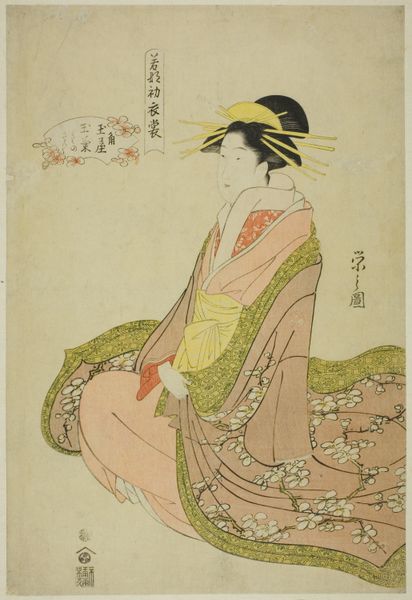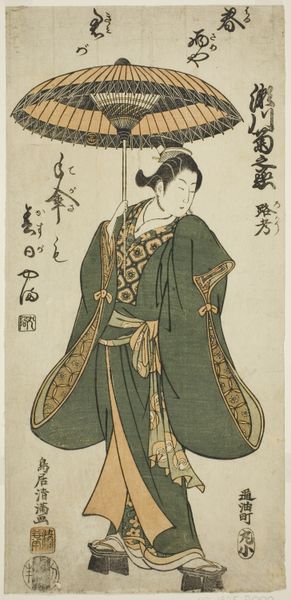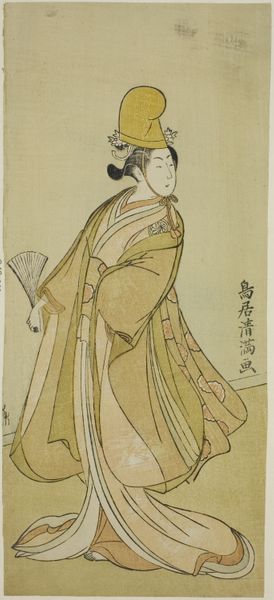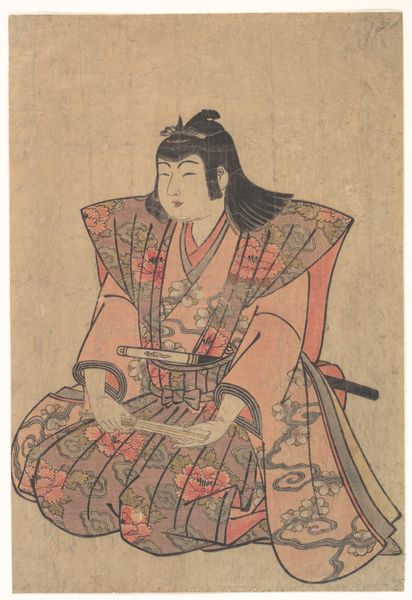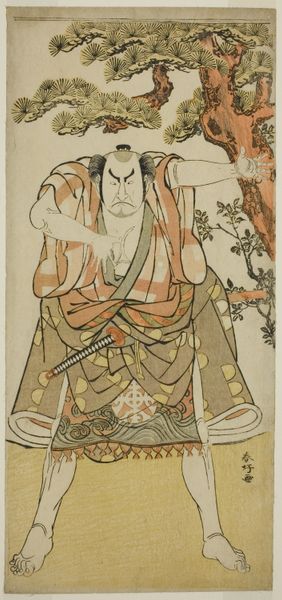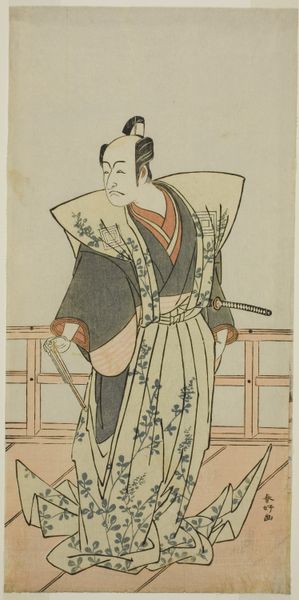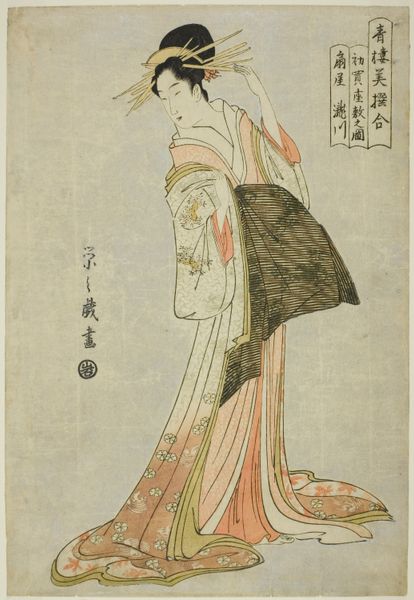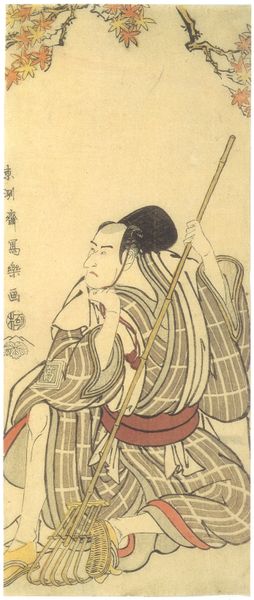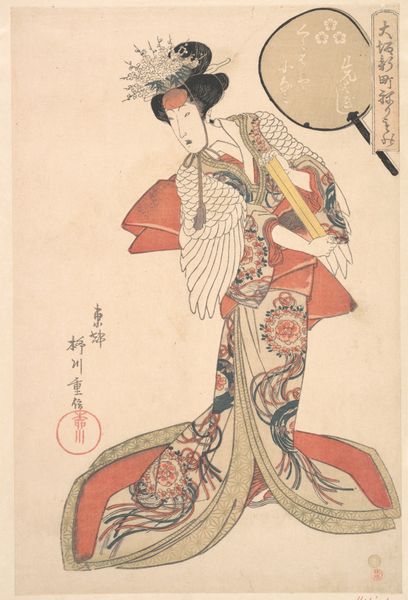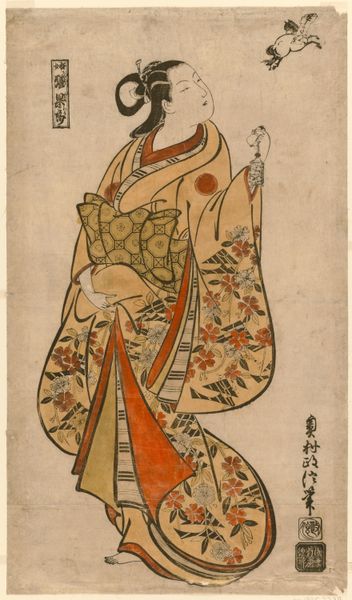
The Actor Ichikawa Danjuro V as Akushichibyoe Kagekiyo (?) c. 1783 - 1784
0:00
0:00
print, woodblock-print
#
portrait
# print
#
caricature
#
asian-art
#
caricature
#
ukiyo-e
#
woodblock-print
Dimensions: 30.8 × 13.9 cm (12 1/8 × 5 1/2 in.)
Copyright: Public Domain
Editor: Here we have "The Actor Ichikawa Danjuro V as Akushichibyoe Kagekiyo (?)," a woodblock print by Katsukawa Shunsho from around 1783 or '84. I’m struck by the character’s intense expression; it's almost a grimace. What symbols or traditions are being referenced here? Curator: The key here is indeed in recognizing the performance conventions. Note the exaggerated features: the furrowed brow, the way the fist is clenched and held close to the face. These are hallmarks of *aragoto*, a hyper-masculine, bombastic acting style within Kabuki theater. Think of it as the superhero role. Editor: So, the artist is not simply capturing a likeness, but is conveying the performance aspect too. How does this "hyper-masculine" character connect with audiences? Curator: Absolutely. The potency of the character, stage name, and performance lives beyond that evening's play; its visual representation becomes a symbol itself, charged with memory. Notice, too, how the cloud pattern on the robe could relate to themes of impermanence in the *ukiyo-e* tradition and how that sits with the actor embodying heroic virtues. It reminds us of the ephemeral nature of even the most celebrated performers. Editor: That tension is fascinating - ephemeral and heroic all at once. So it becomes a visual shorthand for cultural values and aspirations. Curator: Precisely! Shunsho offers us a glimpse into how fame and cultural memory were constructed and consumed through these prints. It reflects a collective cultural self-image, perhaps. Editor: This has opened my eyes to the layers of symbolism at play here. It’s more than just a portrait of an actor; it is also reflecting Japanese culture. Curator: Exactly, and seeing it in that expanded context truly enriches our understanding of the piece.
Comments
No comments
Be the first to comment and join the conversation on the ultimate creative platform.

